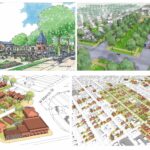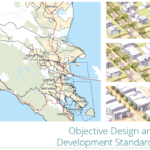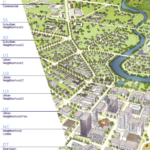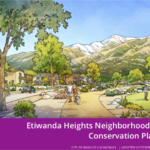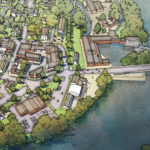New Rochelle Downtown Overlay Zone
The City of New Rochelle has two identities. One as a low-density, commuter suburb, and another as a small city, both in the metropolitan New York region. As with most urban areas in the country, New Rochelle’s once bustling downtown has experienced decline, and had struggled to recover. While there have been revitalization efforts that included most of the “smart growth” principles (e.g. higher density development near transit, mixed-uses et. al.), these have failed at the street level, and have not had the positive impact that the community was hoping it would. After a year of preparation, which involved a substantial number of meetings, and a crowdsourced placemaking effort, the City adopted a form based code, based on a Recommended Action Plan.
While not a mandatory code, the DOZ has a number of incentives. Further, in adopting the code, the City also eliminated a number of incentives that had existed as part of the underlying zoning, in an effort to encourage use of the form based code.
The code regulates the physical form of development based on location and street type. While each parcel of land is given consideration, additional emphasis is placed on certain parcels that we identify as “terminating vistas” and “significant corners”.
Based on proximity to our transit center, the greatest amount of development is permitted in the core of the downtown, and it steps down as expands beyond that core. Further, the code seeks to eliminate detrimental “superblocks” by encouraging pedestrian ways, or other street types that could mitigate negative impacts from existing development. In fact, a subdivision has already been approved to do just this, and a site plan to develop the property is currently under review.
New Rochelle’s struggle to cope with an urban downtown and a suburban mentality forced the code to creatively address off-street parking. As a result, parking is required, though the ratios are significantly lower than the underlying zoning, and with several opportunities to reduce the amounts even further. In order to provide this parking in a form that complies with the code, developers are providing creative techniques including valet service, vehicle elevators and mechanical parking.
While a form based code can greatly reduce the review period for a project, in New York State, review is complicated by the State Environmental Quality Review Act (SEQRA). The DOZ addressed this issue up front, providing parameters on the types of development that are allowed, and conducting an environmental review based on those parameters. As long as a project is consistent with those parameters, the environmental review period is greatly reduced. To date, we have approved 11 projects, ranging in developments six stories to 28 stories in height. Seven project have broken ground, and three more are under review. The review for each of these projects have ranged from just 60-90 days.
For more information about the code, click here.
Code Categories
Physical Contexts:
Organizing Principles:
Implementation Methods:
Development Types:
Special Features:
Driehaus Awards:
No Award





